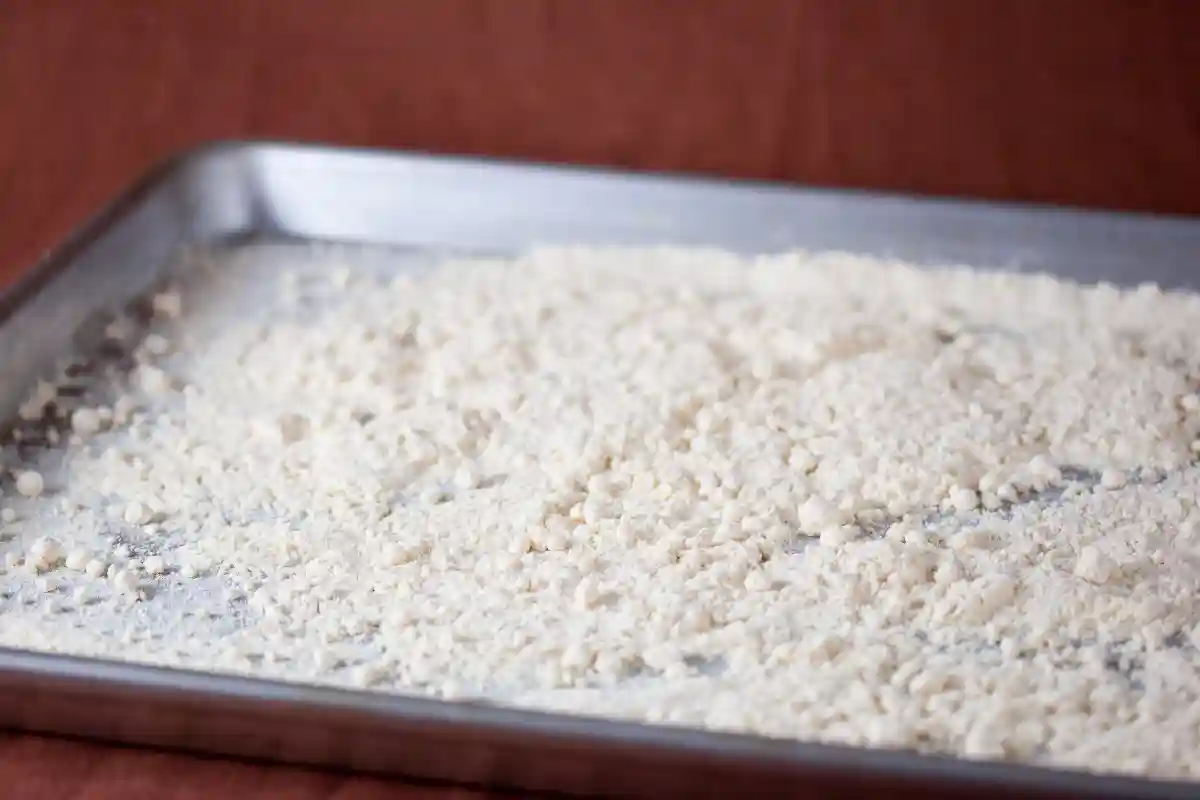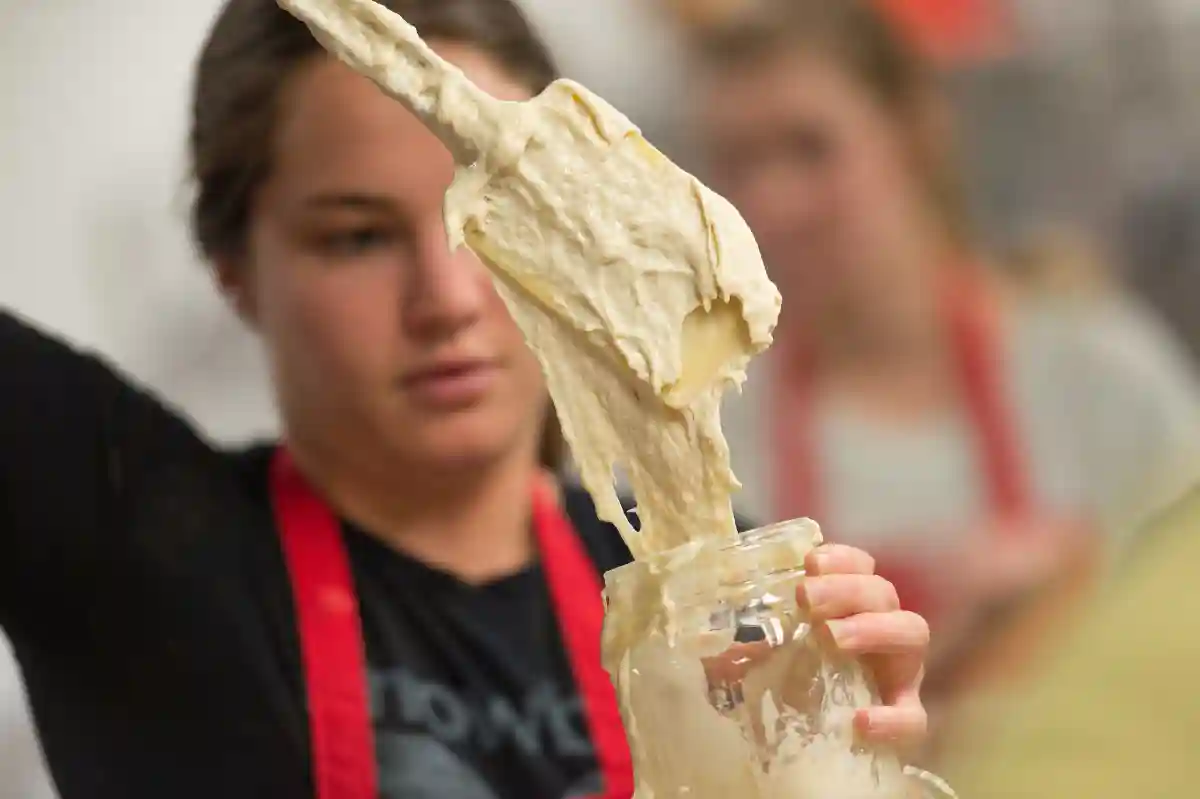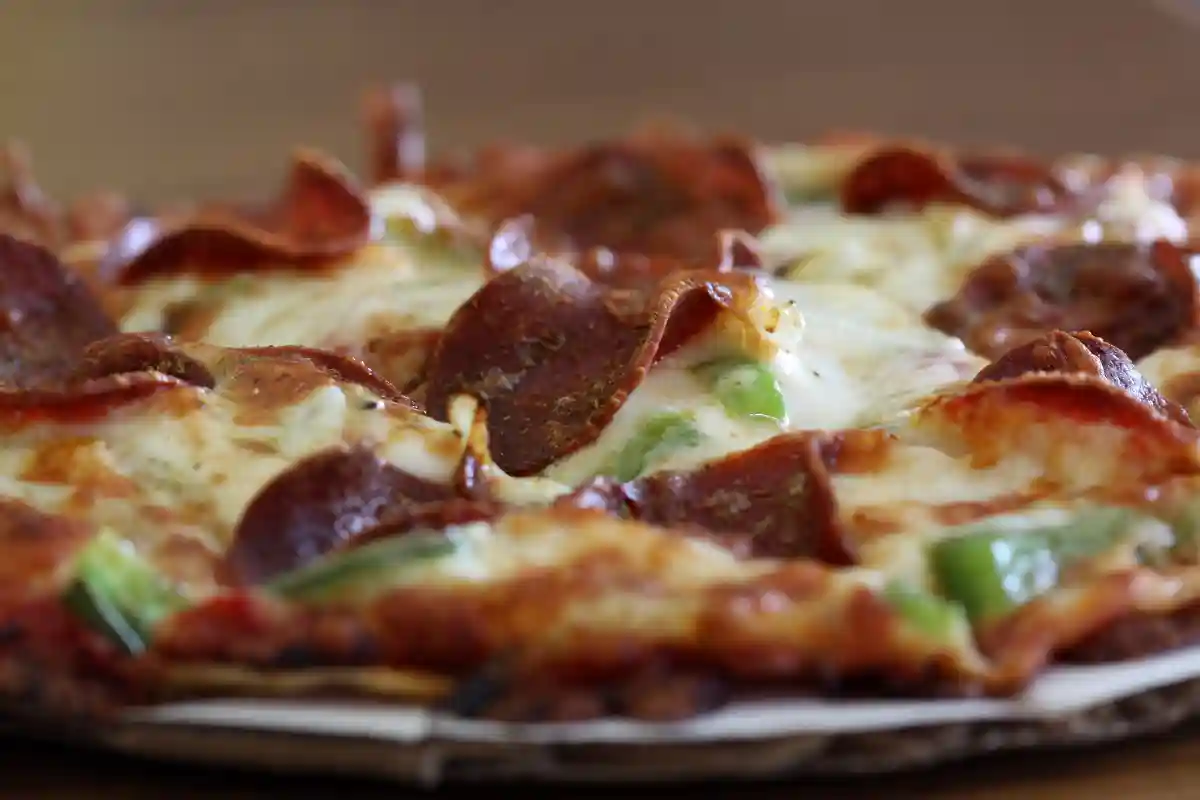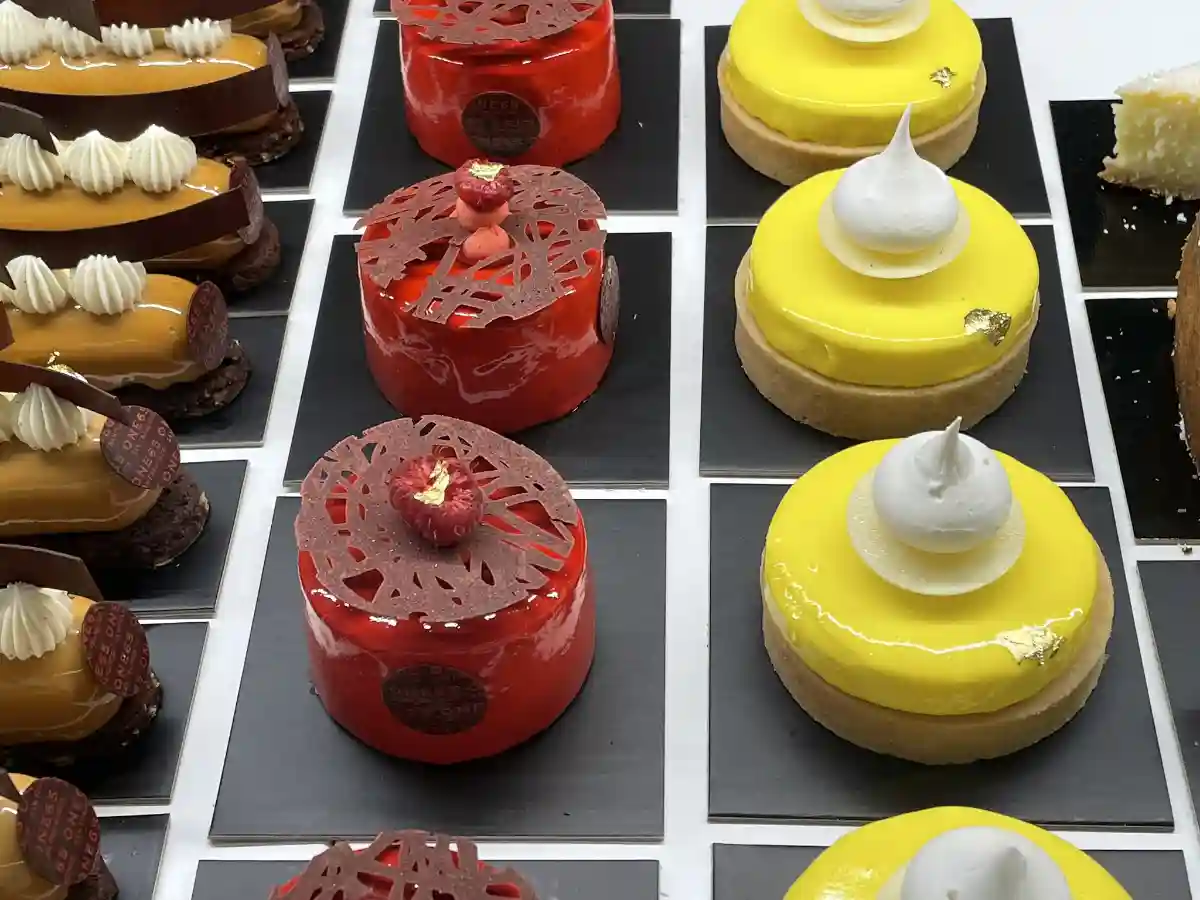Celiac.com 09/23/2023 - For those with celiac disease, gluten-free baking isn't just about culinary preference; it's a vital aspect of maintaining their health and preventing the symptoms and damage associated with gluten consumption. In recognition of the unique challenges faced by individuals with celiac disease, this article is dedicated to advancing the art of gluten-free baking. While many are familiar with the basics of gluten-free substitutions and recipes, we aim to take your culinary creations to the next level. Our purpose is to empower those affected by celiac disease, as well as anyone interested in gluten-free baking, with advanced techniques, innovative recipes, and creative ingredient substitutions. We want to inspire you to go beyond the ordinary and create exceptional gluten-free baked goods that rival their gluten-containing counterparts in flavor, texture, and presentation.
We will explore the world of gluten-free baking, uncovering the secrets to mastering flour blends, harnessing the potential of innovative gluten-free ingredients, employing advanced baking techniques, elevating flavor profiles, customizing and adapting recipes, and showcasing the artistic presentation of your gluten-free creations. Whether you're a seasoned gluten-free baker or just beginning your journey into this culinary realm, there's something here for everyone. Together, let's embark on a delicious and satisfying adventure into the realm of gluten-free baking beyond the basics.
Mastering Gluten-Free Flour Blends
Celiac.com Sponsor (A12):
Gluten-free flour blends are the cornerstone of successful gluten-free baking. These blends serve as the foundation of your recipes, mimicking the structure and texture that gluten provides in traditional baking. Now we will delve into the significance of gluten-free flour blends and offer guidance on how to master them.
The Importance of Gluten-Free Flour Blends
For individuals with celiac disease or gluten sensitivity, removing wheat flour from their diet is a necessity. However, wheat flour contains gluten, a protein that contributes to the elasticity and structure of baked goods. To replicate this essential texture, gluten-free flours must be combined in precise ratios to create a blend that closely mimics the properties of wheat flour. The right blend can make the difference between a crumbly, dry product and a moist, tender one.
Creating Your Own Gluten-Free Flour Blend
While pre-packaged gluten-free flour blends are readily available, creating your own blend allows for greater control over taste and texture. Here's a basic guide to crafting your custom flour blend:
- Choose a Base Flour: Start with a primary flour, such as rice flour, sorghum flour, or brown rice flour. This will make up the majority of your blend.
- Add Starch: Incorporate a starch like tapioca starch, potato starch, or cornstarch to improve the texture and tenderness of your baked goods. Starches help bind ingredients together and create a lighter crumb.
- Enhance Nutritional Value: To boost nutrition and flavor, consider adding nut flours like almond, coconut, or hazelnut. These flours contribute a delightful nuttiness and moisture to your creations.
- Experiment with Ancient Grains: Explore ancient grains like quinoa flour, amaranth flour, or teff flour. These nutritious options add depth and unique flavor profiles to your blend.
- Xanthan Gum or Guar Gum: Include a small amount of xanthan gum or guar gum (typically 1/2 to 1 teaspoon per cup of flour blend) to improve elasticity and binding. These gums mimic gluten's role in providing structure.
- Test and Adjust: Blend your chosen flours in the desired ratios, and test your blend in various recipes. Adjust the proportions to achieve the desired texture and taste for your specific recipes.
Commercially Available Gluten-Free Flour Blends
If you prefer convenience or are new to gluten-free baking, several excellent commercially available gluten-free flour blends are worth considering. Some popular options include:
- gfJules Gluten Free All Purpose Flour: Certified Gluten-Free (GFCO), Certified Kosher (OU) & Certified Free From the Big 9 Food Allergens (CFF): wheat, milk, eggs, peanuts, tree nuts, soy, fish, crustaceans, sesame.
- Bob's Red Mill 1-to-1 Baking Flour: This blend is designed for easy substitution in traditional recipes, making it an excellent choice for beginners.
- Cup4Cup Multipurpose Flour: Developed by renowned chef Thomas Keller, this blend is praised for its performance and taste, closely mirroring wheat flour in various recipes.
- King Arthur Gluten-Free Flour: Known for its consistent results, King Arthur's blend is a versatile choice for both sweet and savory dishes.
- Pamela's Products Artisan Blend: This mix incorporates a variety of flours and starches to produce a reliable and well-balanced flour blend.
Each of these blends has its unique characteristics and works well in specific applications. Experimenting with different commercial blends can help you find the one that suits your baking needs best.
In the journey of mastering gluten-free flour blends, patience and experimentation are key. By understanding the importance of these blends, crafting your own, and exploring commercially available options, you'll be well on your way to creating exceptional gluten-free baked goods with the perfect texture and flavor.
Innovative Gluten-Free Ingredients
In the world of gluten-free baking, innovation often leads to delightful surprises. Beyond the conventional gluten-free flours like rice and sorghum, there exists a treasure trove of lesser-known ingredients with unique properties that can transform your gluten-free baked goods into culinary masterpieces. It's time to explore some of these innovative gluten-free ingredients, understand their distinct qualities, and share recipes that demonstrate their potential.
Almond Flour: Nutty Excellence
- Unique Properties: Almond flour, made from finely ground almonds, boasts a rich, nutty flavor and a moist, tender texture. It's high in healthy fats and protein, making it a nutritional powerhouse.
- Enhancing Baked Goods: Almond flour adds a delightful nuttiness and moisture to your creations. Use it as a partial replacement for traditional flour in recipes for cookies, cakes, and muffins. It's particularly well-suited for gluten-free pastry crusts, providing a buttery, crumbly texture.
- Recipe Inspiration: Try making almond flour-based chocolate chip cookies for a nutty twist on a classic favorite. The almond flour's texture and flavor elevate these cookies to a whole new level.
Coconut Flour: The Versatile Grain-Free Choice
- Unique Properties: Coconut flour is a gluten-free, grain-free option made from the dried, defatted coconut meat. It's exceptionally absorbent, requiring more liquid in recipes, and imparts a subtle coconut flavor.
- Enhancing Baked Goods: Due to its high absorbency, coconut flour is excellent for recipes that require moisture, such as banana bread, brownies, and pancakes. It also provides a pleasant coconut aroma and flavor.
- Recipe Inspiration: Create gluten-free coconut flour pancakes that are light, fluffy, and infused with a tropical twist. Top them with fresh fruit and a drizzle of pure maple syrup for a delightful breakfast treat.
Tapioca Starch: The Textural Marvel
- Unique Properties: Tapioca starch, also known as tapioca flour, is a gluten-free starch derived from the cassava root. It has an incredible ability to create a chewy, elastic texture in baked goods.
- Enhancing Baked Goods: Tapioca starch is a valuable addition to gluten-free flour blends, enhancing the texture of bread, pizza crust, and tortillas. It imparts a satisfying chewiness, which can be elusive in gluten-free recipes.
- Recipe Inspiration: Try crafting gluten-free Brazilian cheese bread (Pão de Queijo) with tapioca starch. These savory cheese puffs have a chewy, cheesy interior and a crisp crust—an irresistible combination.
Teff Flour: The Ancient Grain Secret
- Unique Properties: Teff flour is a nutrient-dense, gluten-free flour made from teff, an ancient grain. It has a mild, earthy flavor and a fine texture.
- Enhancing Baked Goods: Teff flour is versatile, adding a unique depth of flavor to your gluten-free baked goods. It works well in recipes for pancakes, muffins, and injera (a spongy Ethiopian flatbread).
- Recipe Inspiration: Explore the world of East African cuisine by making gluten-free teff injera. This sourdough flatbread is a perfect accompaniment to stews and curries, providing a tangy and hearty base.
These innovative gluten-free ingredients open up a world of possibilities for elevating your baked goods. By understanding their unique properties and experimenting with recipes, you can create exceptional gluten-free treats that not only cater to dietary restrictions but also satisfy your culinary cravings. The key is to embrace these ingredients as creative allies in your gluten-free baking journey.

Coconut Flour - Pre Toasted by Veganbaking.net is licensed under CC BY-SA 2.0.
Advanced Baking Techniques
Elevating your gluten-free baking game goes beyond just using alternative flours. Advanced baking techniques can make a substantial difference in the texture, flavor, and overall quality of your gluten-free baked goods. Now we'll explore three advanced techniques: sourdough starters, long fermentation, and managing hydration levels. We'll delve into how these methods can enhance your gluten-free creations and provide step-by-step instructions and tips for their effective use.
1. Sourdough Starters: Capturing Natural Fermentation
Why Sourdough for Gluten-Free Baking? Sourdough starters harness the power of natural fermentation to improve both flavor and texture. In gluten-free baking, where the absence of gluten can lead to denseness, sourdough can create a lighter, airier crumb. The beneficial microbes in sourdough help break down starches, making it easier for the body to digest.
Getting Started with a Gluten-Free Sourdough Starter:
- Mix 1/2 cup of gluten-free flour (e.g., brown rice flour or a blend) and 1/2 cup of lukewarm water.
- Cover the mixture loosely and let it sit at room temperature for 24 hours.
- Discard half of the mixture and feed it with another 1/2 cup of flour and 1/2 cup of water. Repeat this daily until it's active (usually 5-7 days).
Using Sourdough in Recipes:
- Replace a portion of the liquid and flour in your recipe with an equivalent amount of active sourdough starter.
- Adjust hydration levels as needed to maintain the desired dough consistency.
2. Long Fermentation: Developing Flavor and Structure
The Benefits of Long Fermentation: Long fermentation allows the dough to develop complex flavors and improve its structure. In gluten-free baking, this extended rest period enhances the texture, making it less crumbly.
Steps for Long Fermentation:
- Mix your gluten-free dough as usual.
- Cover the dough and let it rest in the refrigerator for an extended period (12-24 hours or more).
- Remove the dough from the refrigerator and allow it to come to room temperature before baking.
Tips for Success:
- Longer fermentation periods may require adjustments to the hydration level. The dough should remain workable.
- Experiment with different recipes, such as bread, pizza dough, or even muffins, to experience the benefits of long fermentation.
3. Managing Hydration Levels: Achieving the Right Consistency
Why Hydration Matters: Hydration levels in gluten-free dough significantly impact the final product. Different flours absorb liquid differently, so understanding and managing hydration is crucial for achieving the desired texture.
General Guidelines:
- Start with a standard recipe and note the hydration level (water-to-flour ratio).
- Adjust hydration gradually by adding more liquid or flour until the dough reaches the desired consistency.
Tips for Hydration Adjustment:
- For bread-like textures, aim for a higher hydration level.
- For cookies and cakes, a lower hydration level may be preferable.
Mastering these advanced baking techniques can transform your gluten-free baked goods into culinary delights. Sourdough starters infuse flavor and lightness, long fermentation enhances structure and complexity, and managing hydration ensures the perfect dough consistency. Experiment, observe, and adapt these techniques to your favorite recipes to create exceptional gluten-free treats that will leave everyone craving more.

Making sourdough bread starter by Nutrition, Food Safety & Health is marked with CC0 1.0.
Elevating Flavor Profiles
Elevating the flavor of gluten-free baked goods is a delightful journey that can transform your creations from good to exceptional. In this section, we'll share valuable tips and tricks for enhancing the taste of your gluten-free treats. We'll explore the art of using spices, extracts, and natural sweeteners to create delicious, flavorful baked goods. Additionally, we'll provide recipes that demonstrate these flavor-enhancing techniques.
1. Tips and Tricks for Flavor Enhancement
- Toasting Nuts and Flours: Toasting ingredients like almond flour, coconut, or nuts before incorporating them into your recipes adds a rich, nutty depth to your baked goods.
- Citrus Zest: Grated citrus zest (lemon, orange, or lime) can infuse a burst of bright, fresh flavor into your baked goods. It pairs beautifully with a variety of recipes, from muffins to cakes.
- Infused Liquids: Experiment with infusing liquids like milk or cream with spices (e.g., cinnamon sticks or cardamom pods) before adding them to your recipes. This subtle infusion can enhance the overall taste.
2. The Power of Spices and Extracts
- Cinnamon and Nutmeg: These warm, aromatic spices can bring a comforting, homey feel to your baked goods. They're perfect for everything from cookies to bread.
- Vanilla Extract: High-quality vanilla extract adds a sweet, floral note that complements a wide range of flavors. It's a must-have for cakes, cookies, and even pancakes.
- Almond Extract: Almond extract lends a delightful nuttiness to your creations. It's particularly suited for enhancing the flavor of almond-based desserts.
3. Natural Sweeteners and Flavor Infusions
- Honey and Maple Syrup: These natural sweeteners not only provide sweetness but also contribute unique flavors. They're great for drizzling over muffins or incorporating into glazes.
- Fresh Herbs: Surprisingly, fresh herbs like rosemary, basil, or lavender can be used to infuse unique and delightful flavors into your baked goods. Try adding them to shortbread cookies or scones.
- Fruit Reductions: Simmering fruits like berries or peaches with a touch of sugar can create a flavorful reduction to swirl into muffins or use as a topping for cakes.
Recipes to Showcase Flavor Enhancement Techniques
- Blueberry Muffins: These gluten-free blueberry muffins are wonderful, but incorporate lemon zest and fresh blueberries for a burst of citrusy freshness and fruity goodness.
- Banana Pecan Muffins: This oldy but goodie recipe is excellent, but infuse it with cinnamon, nutmeg, and a touch of vanilla extract, and these muffins will be a comforting treat with a warm, aromatic flavor.
- Almond Flour Chocolate Chip Cookies: Almond flour and almond extract work together to create a rich, nutty flavor in these gluten-free chocolate chip cookies.
- Lavender Shortbread Cookies: Fragrant lavender adds a unique, floral note to these gluten-free shortbread cookies, making them a sophisticated and delightful treat.
By incorporating these tips and flavor-enhancing techniques into your gluten-free baking, you can create a diverse array of delicious treats that cater to various tastes and preferences. Experiment with different combinations, trust your palate, and enjoy the journey of crafting exceptional gluten-free delights.
Customizing and Adapting Recipes
Adapting traditional recipes to make them gluten-free can be a rewarding and creative endeavor. In this section, we'll provide guidance on how to successfully transform your favorite recipes into gluten-free versions. We'll discuss the importance of accurate ingredient measurements and adjusting ratios to maintain the desired texture and flavor. Plus, we'll share examples of successfully adapted recipes to inspire your culinary experiments.
1. Adapting Traditional Recipes to Be Gluten-Free
- Select the Right Flour: Begin by selecting an appropriate gluten-free flour or blend based on your recipe's requirements. For instance, rice flour or a 1-to-1 gluten-free flour blend can often replace all-purpose wheat flour in recipes like cakes and cookies.
- Leavening Agents: Gluten-free flours may require adjustments in leavening agents like baking powder or yeast. Experimentation may be necessary to achieve the desired rise and texture.
- Binders: Gluten is a natural binder, so in its absence, you may need to add binders like xanthan gum or guar gum to maintain the structure of your baked goods.
2. The Importance of Accurate Measurements and Ratios
- Weigh Your Ingredients: Measuring ingredients by weight, rather than volume, can provide more accurate results in gluten-free baking. Invest in a kitchen scale to ensure precision.
- Balance Hydration Levels: Gluten-free flours often absorb moisture differently, so adjusting the liquid content is crucial. Too much or too little liquid can affect the texture and consistency of your baked goods.
- Experiment Gradually: Adaptation is often an iterative process. Make small changes, record your adjustments, and be patient. Over time, you'll develop a feel for how to adjust recipes effectively.
3. Successfully Adapted Recipes
- Gluten-Free Chocolate Cake: Adapt a classic chocolate cake recipe by replacing wheat flour with a gluten-free blend. Adjust the leavening agents and moisture levels as needed. The result is a moist, decadent cake with the same rich flavor.
- Gluten-Free Pizza: Transform your favorite pizza recipe by using gluten-free pizza crust mix or creating your own gluten-free pizza dough. Don't forget to adjust the baking time and temperature for the crust.
- Gluten-Free Pancakes: Make fluffy, gluten-free pancakes by swapping wheat flour with a combination of gluten-free flours. Ensure the batter has the right consistency, and you'll have light, airy pancakes for breakfast.
- Gluten-Free Chocolate Chip Cookies: Adapt the classic chocolate chip cookie recipe by using a gluten-free flour blend and adding xanthan gum or guar gum to maintain the chewy texture. The end result? Delicious gluten-free cookies that rival their traditional counterparts.
Customizing and adapting recipes to be gluten-free allows you to enjoy your favorite dishes without compromising on taste and quality. By following these guidelines, paying attention to measurements, and experimenting thoughtfully, you can successfully create gluten-free versions of your beloved recipes that are just as satisfying and delicious.

Gluten-free pizza by Dawn Huczek is licensed under CC BY 2.0.
Showcasing Artistic Presentation
The art of gluten-free baking goes beyond taste; it extends to presentation and aesthetics. In this section, we'll explore the importance of presentation in gluten-free baking and offer decorating and plating tips to help you create visually appealing gluten-free desserts. We'll also share inspiring photos of beautifully presented gluten-free baked goods to spark your creativity.
1. The Importance of Presentation in Gluten-Free Baking
- First Impressions: Presentation is the first thing that catches the eye when serving gluten-free baked goods. A beautifully presented dessert not only looks enticing but also communicates care and attention to detail.
- Enhancing the Experience: Aesthetically pleasing desserts elevate the overall dining experience. They can make your gluten-free treats feel special and indulgent.
- Appetite Stimulation: Well-presented dishes can stimulate the appetite and make your gluten-free baked goods even more appealing to family and guests.
2. Decorating and Plating Tips for Gluten-Free Desserts
- Use Vibrant Ingredients: Incorporate colorful, fresh fruits like berries, citrus segments, or edible flowers to add a pop of color and freshness to your desserts.
- Textures and Layers: Play with different textures by adding crunchy elements like chopped nuts or crumbled meringue alongside creamy components like whipped cream or ganache.
- Sauces and Drizzles: Decorative sauces or drizzles can add elegance and complexity to your dessert plates. Consider chocolate ganache, berry coulis, or caramel.
- Edible Garnishes: Elevate your presentation with edible garnishes like mint leaves, grated chocolate, or finely shredded coconut.
- Plate with Precision: Pay attention to the arrangement of elements on the plate. Balance colors, shapes, and heights for an appealing composition.

French pastries by Ted Drake is licensed under CC BY-ND 2.0.
3. Beautifully Presented Gluten-Free Baked Goods
Remember that the key to showcasing artistic presentation in gluten-free baking is creativity and attention to detail. Experiment with different plating techniques and decorations to make your gluten-free desserts not only delectable but also visually stunning, ensuring a memorable dining experience for all.
Conclusion
In the world of gluten-free baking, the journey is not only about necessity but also about creativity and culinary innovation. Throughout this article, we've embarked on a flavorful exploration of gluten-free baking beyond the basics, uncovering techniques, ingredients, and presentation tips that can empower individuals with celiac disease and gluten sensitivities to create exceptional treats. Let's recap the key takeaways and celebrate the joys of gluten-free baking.
Key Takeaways:
- Mastering Flour Blends: Gluten-free flour blends are the foundation of successful gluten-free baking. Create your own or explore commercial options to achieve the right texture and structure for your recipes.
- Innovative Ingredients: Embrace unique gluten-free ingredients like almond flour, coconut flour, tapioca starch, and more to enhance the flavor and moisture of your baked goods.
- Advanced Baking Techniques: Experiment with sourdough starters, long fermentation, and hydration levels to improve the texture and taste of your gluten-free creations.
- Elevating Flavor Profiles: Enhance the taste of your gluten-free treats with spices, extracts, natural sweeteners, and creative flavor infusions.
- Customizing and Adapting Recipes: Adapt traditional recipes thoughtfully, focusing on selecting the right flour, precise measurements, and achieving the perfect balance in ratios.
- Artistic Presentation: Pay attention to presentation and aesthetics, using colorful ingredients, textures, garnishes, and plating techniques to create visually appealing gluten-free desserts.
Embrace the Gluten-Free Culinary Journey
We encourage every celiac and gluten-sensitive baker to embrace the gluten-free culinary journey with enthusiasm and creativity. Don't be afraid to experiment, adapt, and innovate in your kitchen. Gluten-free baking can be an art form in itself, offering endless possibilities for delicious and safe treats.
Remember that gluten-free baking is not just a necessity; it's an opportunity to explore new flavors, textures, and techniques. Whether you're baking for yourself or sharing your creations with friends and family, take pride in the fact that you're not only enjoying safe gluten-free treats but also delighting in the joys of culinary creativity.
So, go ahead and embark on your next gluten-free baking adventure. Create, savor, and share your exceptional gluten-free delights with the world. After all, in the realm of gluten-free baking, the possibilities are as limitless as your imagination, and the results are truly scrumptious.




.thumb.jpg.d8ccdbb71dd5d276bacf435aa9f4427d.jpg)

Recommended Comments
There are no comments to display.
Create an account or sign in to comment
You need to be a member in order to leave a comment
Create an account
Sign up for a new account in our community. It's easy!
Register a new accountSign in
Already have an account? Sign in here.
Sign In Now